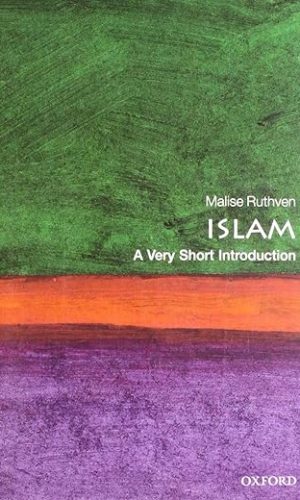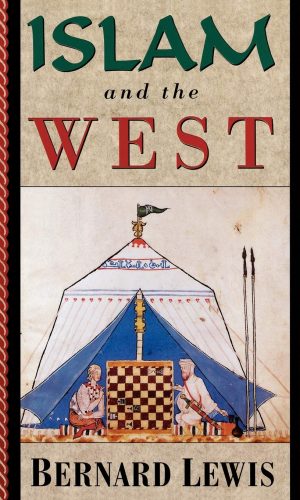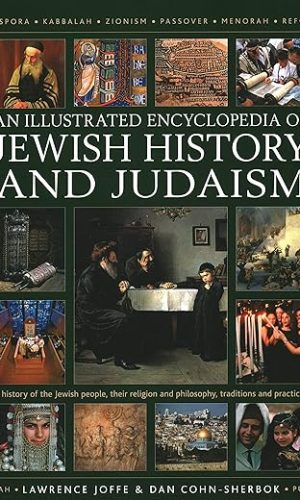In God’s Path: The Arab Conquests and the Creation of an Islamic Empire (Ancient Warfare and Civilization)
£7.00
In just over a hundred years–from the death of the Mohammed in 632 to the beginning of the Abbasid Caliphate in 750–the followers of the Prophet swept across the whole of the Middle East, North Africa, and Spain. The conquered territory was larger than the Roman Empire at its greatest expansion, and it was claimed for the Arabs in roughly half the time. How they were able to engulf so many empires, states, and armies in such a short period of time is a question which has engaged historians since at least the ninth century. Most recent popular accounts have been based almost solely on the early Muslim sources, which were, in short, salvation history, composed for the purpose of demonstrating that God had chosen the Arabs as his vehicle for spreading Islam throughout the world.
While exploiting the rich biographical and geographical information of the early Muslim sources, this groundbreaking work delivers a fresh account of the Arab conquests and the establishment of an Islamic Empire by incorporating different approaches and different bodies of evidence. Robert G. Hoyland, a leading Late Antique scholar, accomplishes this by first examining the wider world from which Mohammed and his followers emerged. For Muslim sources, the revelation of Islam to Muhammad is the starting point for their history, and modern university departments have tended to reinforce this approach. Late Antique studies have done us the service of shedding much needed light on the 4th to 6th centuries, thus giving us a better view of the nature of Middle Eastern society in the decades before the Arab conquests. In particular, Hoyland narrates the emergence of a distinct Arab identity in the region of the Roman province Arabia and western (Saudi) Arabia, which is at least as important for explaining the Arab conquests as Muhammad’s revelation. The Arabs are the principal, almost sole, focus of the Muslim conquest narratives, and this is the norm for modern works on this subject. Yet, in the same period the Khazars, Bulgars, Avars and Turks established polities on the edges of the superpowers of Byzantium and Iran; in fact, the Khazars and Turks continued to be major rivals of the Arabs in the seventh and eighth centuries. The role of these peripheral states in the Arab success story is underscored in the narrative. Innovative and accessible, In God’s Path is a welcome account of a transformative period in ancient history.
Read more
Additional information
| Publisher | 1st edition (1 Oct. 2014), Oxford University Press |
|---|---|
| Language | English |
| File size | 18540 KB |
| Text-to-Speech | Enabled |
| Screen Reader | Supported |
| Enhanced typesetting | Enabled |
| X-Ray | Not Enabled |
| Word Wise | Enabled |
| Sticky notes | On Kindle Scribe |
| Print length | 320 pages |
| Page numbers source ISBN | 0199916365 |











by Jenny Irish
Beautiful book with helpful maps and the text size is about 13 which is great as it makes for easier reading.
I really enjoyed reading this and it explains a lot, such as how Islam spread so quickly. Hoyland shows how a few Arabs could not control cast areas such as North Africa.
So conversion happened by assimilation. It explains how many capitulated rather than fight and some like the Persians were battle weary.
He explains how by speed the Arab tribes would begin by making raids to test defenses before invasion. There were a few surprises too such as how Christian and Jewish tribes participated in raids, at least in the early days.
Overall its very I formative and you won’t regret buying it.
by Geoff H.
good
by docread
This scholarly but very readable narrative continues in the same vein as the highly praised Hugh Kennedy’s book on the Arab conquests published in 2007. Both authors while facing a major challenge because of paucity or biased sources try to strike a balance between the limited contemporary Christian testimonies written mostly by clerics or monks in the 7th century and the much later Muslim canonical sources of the 9th Century about long past events which relied on chains of oral transmitters.
Although they cover the same material I found Kennedy’s account generally more lively and particularly informative about the political and religious background of the various conquered lands. By contrast Hoyland’s account gives more detailed analysis about the dynamics of the early Arab rule and the impact of the conquests on the populations. He provides good insights about the Persian immense contribution to the forging of a distinct Islamic civilisation as well as hinting about the reasons for the early cleavage between the supporters of a sacred lineage( Shiites) and the more egalitarian meritocratic Sunnis.
Both authors explain the success of the Muslim conquests as the product of a unique set of historical circumstances with the fatal weakening of the two dominant empires after years of strife, the preaching of a simple new monotheistic faith devoid of clergy in a Christian environment of fratricidal doctrinal disputes and the flexible mobility and tenacity of a hardy nomadic soldiery gratified by the promise of plunder. Other factors were the occasional active collaboration of disgruntled misruled populations or their opportunist leaders as well as ethnic affinities particularly in the desert confines of Syria and Mesopotamia leading to alliances between the local population with the Arab invaders. They both emphasise that the original Arab rulers were very reluctant to convert their subjects to their own religion for fear of undermining their source of taxation as they relied on the poll tax ( jizia) imposed on the infidels.
It is refreshing to have now two solid accounts based on a multiplicity of sources to counteract the wayward claims of some revisionists who deny that the Arab invasions were triggered by the rise of Islam preached by the prophet Mohamed in the Hejaz or they ever took place.
by Strv 74
This is a book that I have been looking for. After reading a number of books on how the Arabs managed to create their empire and the spread of Islam I was still looking for the answer to some fundamental questions. This book,short as it is, manages to describe this world changing process perfectly and in doing so addresses these questions probably as far as is possible today.
Professor Hoyland has taken a different approach than most other writers in that he uses non-Muslim sources from the time that this expansion took place and up until the break-up of the Empire combined with available Muslim sources. This is necessary since there are almost no Muslim sources from the seventh century and most of them are from two hundred years after events took place. By bringing together information from all available sources the picture that emerges is far more complex than what is usually presented.
He starts the book by describing the situation in the Middle East before the Arab expansion. It is clear that the Arabs did not burst out of the desert but were well established in all border areas and in contact with surrounding empires. It is quite surprising to read about Christian and Jewish Arabs (!) living in these border zones.
When the expansion really starts it is also quite clear that what drove it was the ambition to conquer and create an empire like any other state. The spread if Islam came after this first wave of armed forces.
Professor Hoyland also manages to explain how it was possible to conquer such a vast territory when the Arabs were outnumbered at least 50 to 1. The Capture of Egypt was a particular interesting story. By reading this one has to give credit to the Arabs for using a tactics that probably made their expansion far easier and also less costly for both them and the people they conquered.
Finally the spread of Islam took far longer than at least I had been aware of. Egypt as an example did not have a majority of Muslims until four hundred years after the Arab invasion.
While the text is excellent the book itself would have been worth a higher production quality. Maps and photos are all in black and white and the text itself has a font size that is from my point of view to small.
But what I learned from this book was a great deal. Also a reflection that the people trying to spread Islam 1400 years ago were far less aggressive than some of those trying to do the same today. Remember that the Arab aggression was about creating an empire and not spreading Islam. This is an excellent book to put even today’s events into perspective.
by Jenny Irish
An interesting book that gives useful insights into a crucial period in history. As always, maps are indispensable for places with unfamiliar names and they are a bit small on the Kindle.
by Iain Shepherd
Well-written, concise account of the hundred years after Muhammad, drawing as far as possible in contemporary sources, and offering a helpful explanation of the means by which the Arabs gained their military victories and the way in which Islam was established in conquered territories.